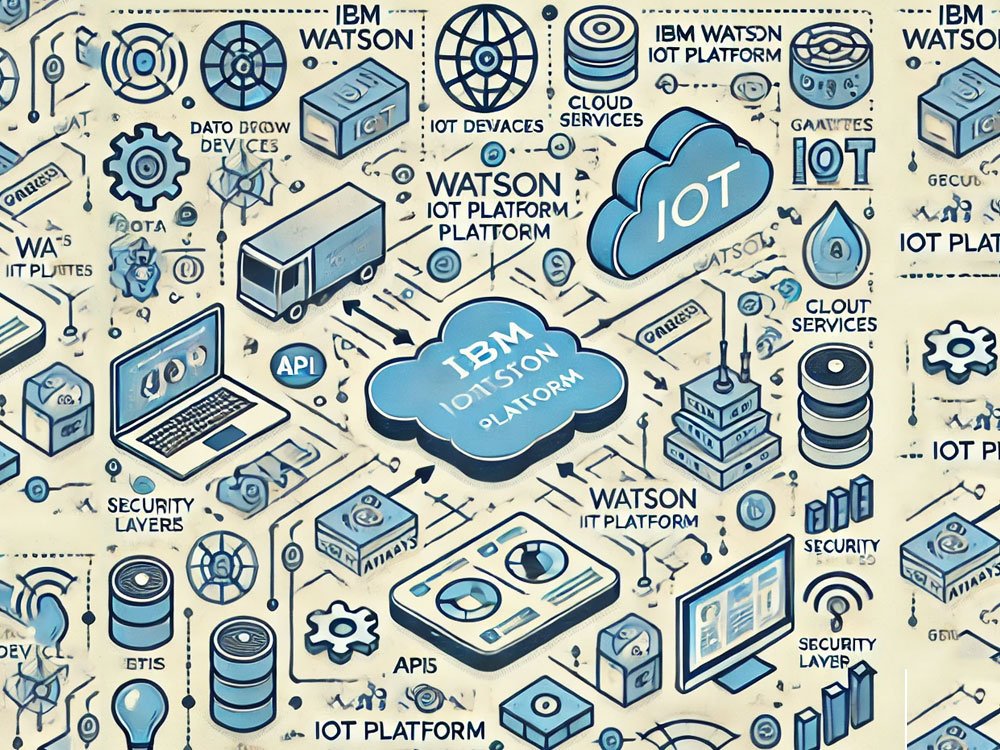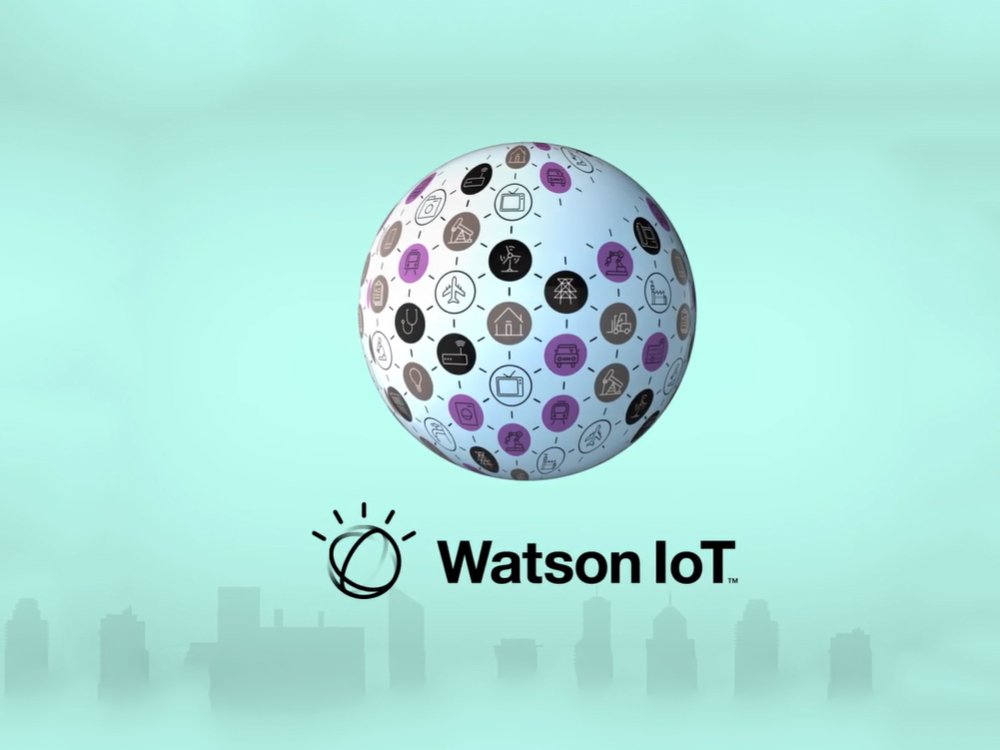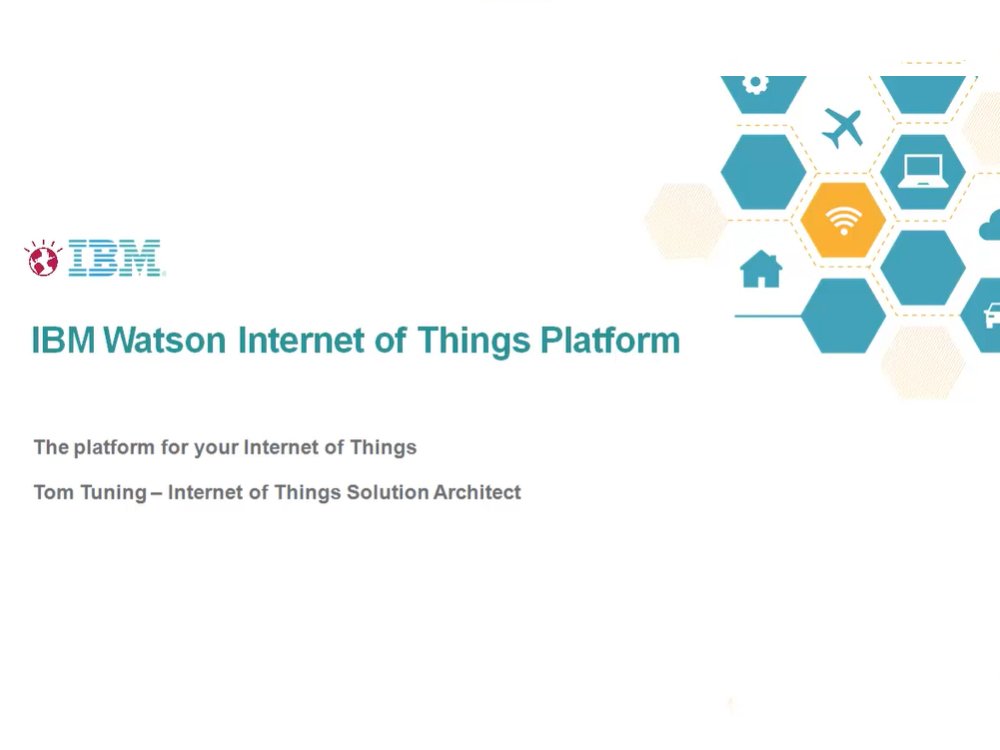
Explain Working Principle of Cloud Base IBM IoT Platform
The cloud base IBM IoT platform is a complex and powerful system that integrates IBM’s advanced technologies in cloud computing, big data analysis, device connection and management, security and privacy protection, and provides enterprises with an end-to-end IoT solution.
The following is a detailed and comprehensive introduction to the working principle of the platform:
Platform Overview
The IBM IoT platform is built on IBM’s public or private cloud to help enterprises connect, collect, process, analyze and visualize data, and remotely manage and control devices for IoT devices. The platform supports multiple device protocols and provides rich API interfaces, which can be easily integrated into the company’s existing IT system to achieve rapid development and deployment of IoT applications.

IBM Watson IoT
Device connection and management
1. Device access:
The IBM IoT platform supports multiple device access methods, including wired and wireless connections (such as Wi-Fi, Bluetooth, cellular networks, Zigbee, etc.). Devices can access the platform through native protocols (such as MQTT, CoAP, LWM2M, etc.) or the Device SDK provided by IBM (supporting multiple programming languages such as C and Java). In addition, for devices that cannot directly access the Internet, the platform also provides device gateway services to achieve indirect access to devices.
2. Device authentication and security:
To ensure the security of device access, the IBM IoT platform uses encryption protocols such as TLS/DTLS to encrypt device communications, and implements a device authentication mechanism to ensure that only authorized devices can access the platform. In addition, the platform also provides device security monitoring and alarm services to promptly discover and handle device security issues.
3. Device management:
The platform provides functions such as device grouping, tag management, and batch operations (such as batch creation of devices, batch firmware upgrades, etc.) to reduce device management costs. At the same time, the platform also supports real-time monitoring of devices, including online, offline, and inactivated states, to ensure that enterprises can keep track of device status at any time.
Data collection and processing
1. Data reporting:
The device reports the collected data to the IBM IoT platform through protocols such as MQTT. The platform transfers device message flows to business servers through AMQP consumer groups to achieve real-time data collection.
2. Data forwarding and storage:
The platform provides data forwarding rules to forward device data to other cloud products (such as databases, big data analysis services, etc.) for storage and processing. At the same time, the platform also supports data persistence storage to ensure long-term preservation and traceability of data.
3. Data processing and analysis:
The IBM Internet of Things platform provides powerful data processing and analysis capabilities. The platform supports real-time data stream processing and can filter, aggregate, and route device data. In addition, the platform also integrates IBM’s big data analysis services, using advanced analysis tools such as machine learning algorithms and data visualization tools to extract data insights and identify patterns, providing strong support for corporate decision-making.
Application development and integration
1. Open API interfaces and SDKs:
The IBM Internet of Things platform provides a wealth of API interfaces and SDKs to help developers quickly incubate industry applications. Developers can use these interfaces and SDKs to implement operations such as reading, writing, and subscribing to device data, as well as remote management and control of devices.
2. Application docking and integration:
The platform supports seamless integration with the company’s existing IT systems, including ERP, CRM, SCM and other systems. Through API interfaces or middleware services, companies can easily integrate IoT applications into existing business processes to automate and optimize business processes.
3. Industry solutions:
The IBM IoT platform provides a wealth of solutions for different industries, such as smart home, industrial automation, smart transportation, smart medical care and smart agriculture. These solutions are customized and developed based on industry characteristics and needs, and can help companies quickly deploy and operate IoT applications.

IBM Watson IoT Platform architecture
Security and privacy protection
1. Data encryption and access control:
The IBM IoT platform uses advanced encryption technology to encrypt and protect device communications and data storage. At the same time, the platform implements a strict access control mechanism to ensure that only authorized users can access device data and applications.
2. Security monitoring and alarm:
The platform provides security monitoring services to monitor security risks in real time during device access, data transmission, data storage, etc. Once abnormal behavior or potential threats are detected, the platform will immediately trigger an alarm and take corresponding security measures.
3. Compliance and audit:
The IBM IoT platform strictly complies with the data protection, privacy and network security regulations of various countries. The platform provides compliance audit services to ensure that the enterprise’s IoT applications comply with relevant laws and regulations.
Platform advantages and features
1. End-to-end solution:
The IBM IoT platform provides a full range of solutions from device access, data collection and processing, application development and integration to security and privacy protection to meet the full range of enterprise IoT applications.

iot application management with ibm watson iot platform
2. High scalability:
The platform supports the access and management of massive devices and can easily cope with the scale expansion of enterprise IoT applications. At the same time, the platform provides flexible resource configuration and billing models to reduce enterprise operating costs.
3. Powerful data analysis capabilities:
Integrating IBM’s big data analysis services, providing advanced data analysis tools and methodologies to help enterprises extract valuable information and insights from massive data.
4. Rich industry solutions:
Provide customized solutions and services for different industries to help enterprises quickly deploy and operate IoT applications.
5. Strict security:
Adopt advanced encryption technology and access control mechanism to ensure the security of device communication and data storage; provide comprehensive security monitoring and alarm services and compliance audit services to ensure the compliance and security of enterprise IoT applications.
In summary, the cloud-based IBM IoT platform is a powerful, secure, reliable and easy-to-expand IoT solution. It can help enterprises achieve all-round needs such as connection and management of IoT devices, data collection and processing, application development and integration, and security and privacy protection, and provide strong support for enterprise digital transformation and intelligent upgrading.
IBM IoT Platform PDF Download
About IoT Cloud Platform
IOT Cloud Platform (blog.iotcloudplatform.com) focuses on security IoT, industrial IoT, military IoT, best IoT projects, IoT modules, embedded development, IoT circuit boards, IoT solutions, Raspberry Pi development and design, Arduino programming, programming languages, RFID, lora devices, IoT systems, IoT design, IoT programming, sensors, smart homes, smart cities, new energy, semiconductors, smart hardware, photovoltaic solar energy, lithium batteries, chips and other scientific and technological knowledge.
FAQs
The following are frequently asked questions and answers about the IBM Cloud IoT Platform:
The IBM Cloud IoT Platform is a cloud service platform that provides connectivity, management, and data analysis for IoT devices. It supports fast device access, real-time data monitoring and analysis, and data-based intelligent applications.
The IBM Cloud IoT Platform supports a variety of device connection protocols, including but not limited to MQTT, HTTP, etc., to meet the needs of different devices and scenarios.
The device needs to establish a connection with the platform through a specified connection protocol (such as MQTT) and follow the platform’s device authentication and authorization mechanism for identity authentication. After the connection is successful, the device can start sending data to the platform and receiving control instructions.
The IBM Cloud IoT Platform provides a device management interface where users can view device status, monitor device data, send control instructions, etc. At the same time, the platform also supports functions such as device grouping and tag management to facilitate users to manage large-scale devices.
The IBM Cloud IoT platform provides real-time data monitoring capabilities. Users can set data monitoring rules on the platform. When device data meets specific conditions, the platform will automatically trigger an alarm or notification.
The platform has built-in data analysis tools. Users can use SQL or NoSQL query languages to filter, aggregate and analyze device data. At the same time, the platform also supports integration with third-party data analysis tools to meet more complex analysis needs.
The platform adopts a variety of security measures, including device identity authentication, data encryption transmission, access control, etc., to ensure the security of device data during transmission and storage. In addition, the platform also supports users to customize security policies to meet security needs in different scenarios.
The IBM Cloud IoT platform strictly abides by privacy protection regulations, anonymizes user data, and restricts access to sensitive data. At the same time, the platform also provides user privacy setting options, allowing users to independently control the scope of data sharing and how to use it.
The pricing model of the IBM Cloud IoT platform is flexible and diverse, depending on the specific needs and usage of users. It usually includes equipment connection fees, data storage fees, data analysis fees, etc. Users can choose the appropriate pricing plan based on their budget and needs.



